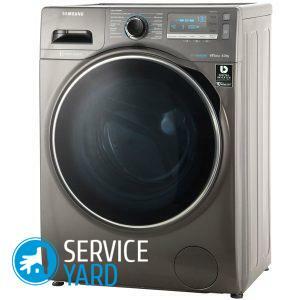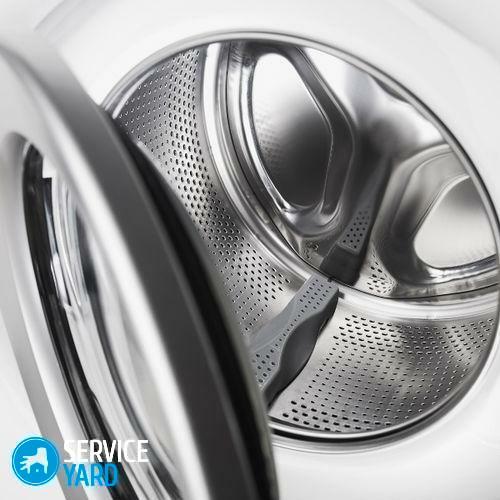Low-quality power supply is an urgent problem, requiring an early resolution. After all, insufficient or high voltage in the network creates problems with the use of electrical appliances and even is able to bring expensive equipment out of order. To protect home appliances from power surges and fully use it regardless of the quality of energy, you need a stabilizer.
Choose the device that ensures the uninterrupted operation of the computer, or protects the entire arsenal of electrical appliances of a country house, the article will help.
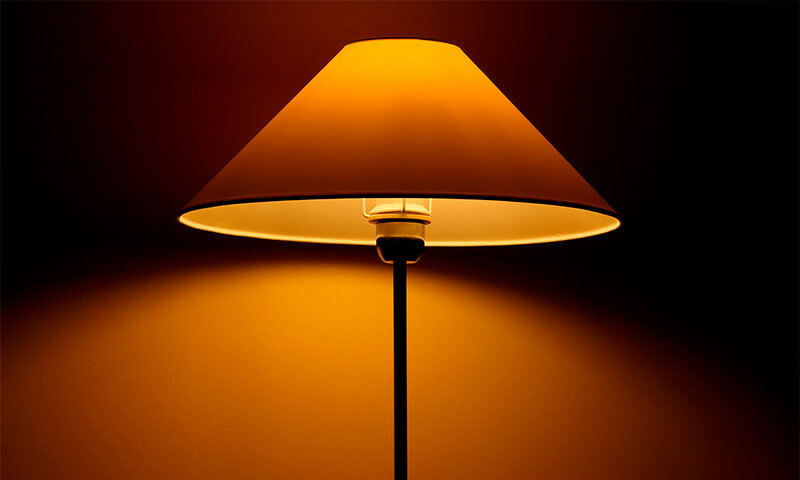
Contents:
- The best manufacturers of voltage regulators
- The principle of the voltage regulator and its design
- Types of voltage regulators
- The main parameters of the voltage regulator
- Which voltage regulator to choose
- The cost of voltage regulators
The best manufacturers of voltage regulators - which firm to choose
Quality, reliable equipment forStabilization of tension is offered by domestic and foreign manufacturers of trade
1. APC
2. RUCELF
3. Defender
4. Lider
5. Resanta
You can see the features, brief characteristics, advantages and disadvantages of the most popular models of stabilizers produced by the top manufacturers.ranking the best voltage regulators.
Principle of operation of the voltage regulator and its design
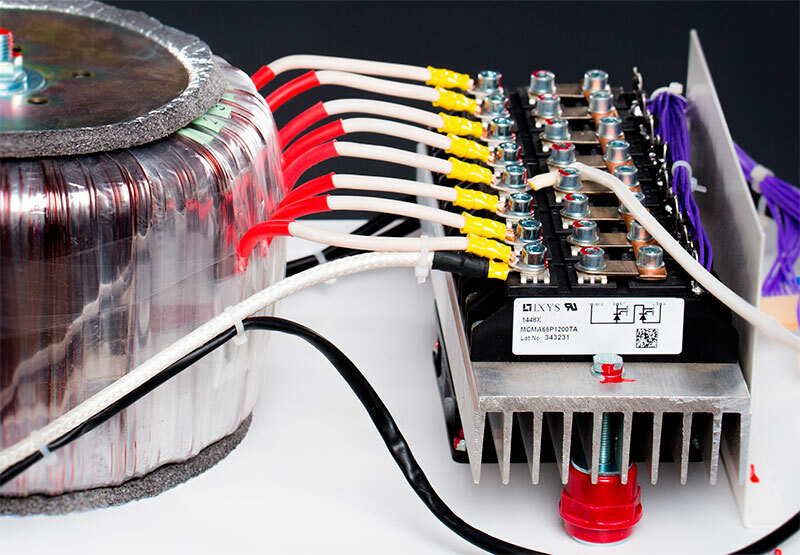
The design of most devices is based on a powerful transformer. Stabilizers, whose action is based on its application, depending on the method of voltage regulation and other design features, are divided into two groups.
The device can be:
- Electromechanical;
- Electronic.
The first group includes devices with a servomotor. The control board analyzes the input signal. Depending on its magnitude, it changes, and the servo moves at a certain angle. When the position of the drive is changed, the carriage mounted on it moves a carbon brush along the winding of the power transformer. As a result, the output voltage changes.
A slightly different principle of operation of electronic devices. Depending on the value of the input signal that has arrived on the monitoring board, the transformer secondary winding sections are switched on or off. Switching is carried out by means of relays( in relay regulators) or by means of semiconductor switches that are assembled on thyristors or triacs.
The transformerless transformer for voltage conversion features inverter stabilizers. The AC current flowing into the device passes through the frequency filter. Then, with the help of a rectifier and a corrector, it is converted into a constant one and accumulated in capacitors. At the next stage, electricity is supplied to the inverter and the generator, which are again converted into an alternating current with parameters close to ideal.
Types of voltage regulators
The type of device determines the principle of its operation and the complexity of the design. Stabilizer used in everyday life can be of the following types.
Electromechanical stabilizer
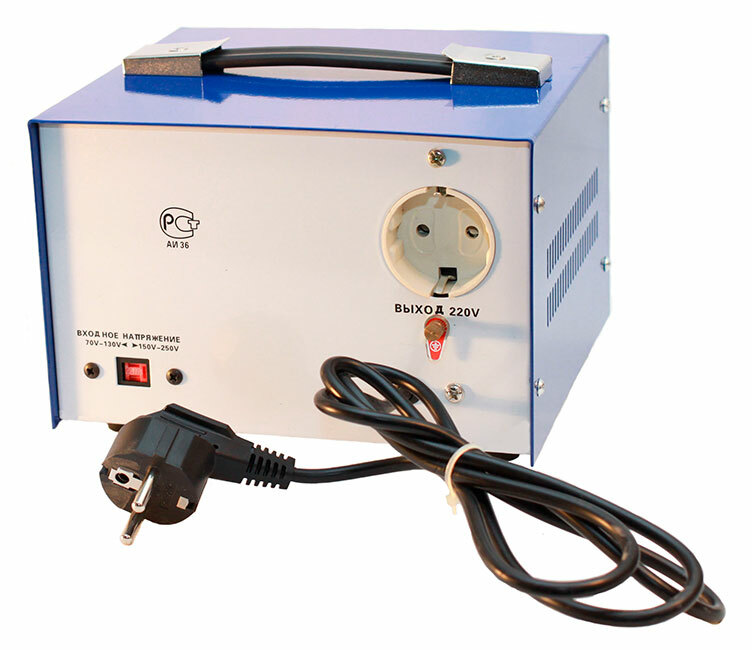
This type of device is recommended to be used in a network for which sudden voltage surges are not typical, but it is constantly overestimated or underestimated. The use of equipment optimally affects the operation of lighting devices with unstable voltage. High accuracy of the stabilizer makes it possible to use it in networks for the protection of audio equipment and measuring instruments.
Some manufacturers include two graphite brushes in the equipment design. An increase in the contact area of the brush with the winding of the transformer accelerates the stabilization of the voltage to the desired level.
Pluses:
- Low error( 2-3%);
- Resistance to high loads - the equipment is capable of withstanding a sharp voltage jump( 2-3 seconds) with a 2-fold increase in the nominal value);
- Ability to work with large loads;
- Smooth voltage regulation;
- Ability to work with any input voltages;
- Low noise level in the absence of network fluctuations.
Disadvantages:
- The speed of the brush, limited by the engine, affects the response rate of the device( approximately 10-15 V / s);
- Wear of moving parts over time requires their replacement( graphite brushes will have to be replaced by new ones after about 3-5 years of use, servo - after 5-7 years);
- High power devices are heavy and bulky;
- Operating temperature range from -5 ° C to +40 ° C;
- The need for annual maintenance to maintain the device in working order;
- At moments of voltage stabilization, produces a characteristic noise.
Relay stabilizer
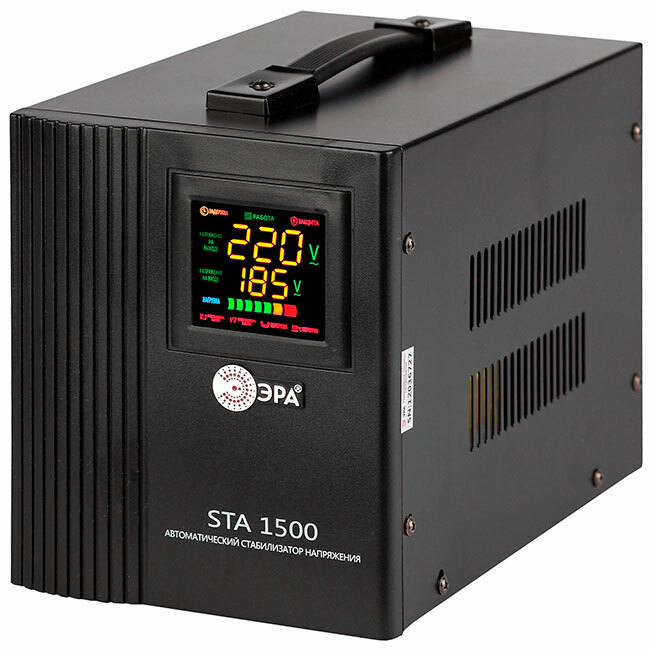
This type has gained the most popularity due to a combination of low cost with good performance. It is recommended to use a relay regulator to protect individual low-power devices( heating boiler, computer) in relatively "quiet" electrical networks.
The feature of this type of stabilizers is a step change in the output voltage in steps of 5-20 V, which can affect the operation of lighting equipment( lamp flicker).It is not desirable to use in lighting systems, since with an error of 3% the change in the glow of the lamps during the alignment of the bursts is perceived by the eyes.
The accuracy of the adjustment depends on the number of relays entering the device. But with the increase in the number of relays, the frequency of their trips increases, which is accompanied by small jumps of voltages. Usually 4 relays are included in the design of the stabilizer, with an error of 8%.To reduce the figure to 5-6% in the device include 6 relays.
Advantages:
- High speed response( approximately 100-200 B per second);
- Large overload capacity, enabling the work with devices with high starting currents;
- Operation over a wide temperature range( -30 ° C to + 40 ° C);
- Compact and light weight.
Disadvantages:
- Gradual mechanical wear of the relay( the average lifetime of the relay is 10 years, depends on the quality of the relay and the mode of operation of the equipment);
- The speed is directly proportional to the error - the smaller it is, the less the step of the step of adding the voltage. The more steps you need to switch the device, which will take more time;
- The design of a large number of switching nodes, which reduces the reliability of equipment in general.
Thyristor( Triac) stabilizer
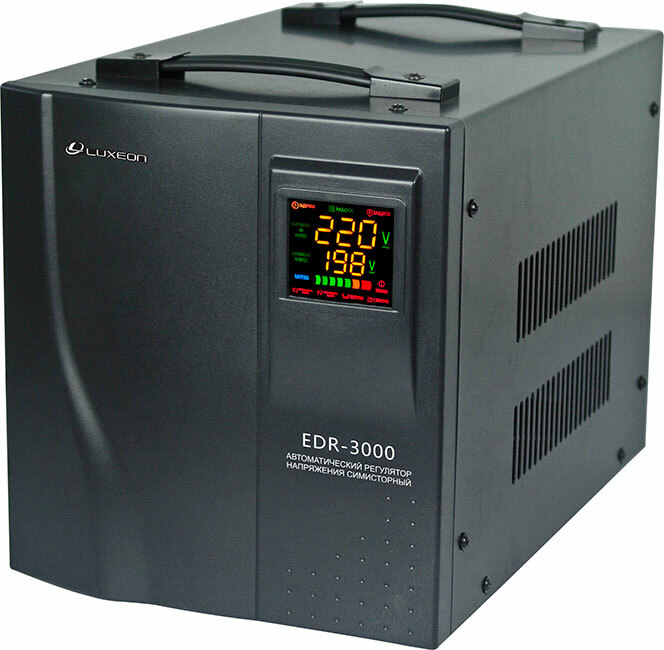
This type of device has similar units and a similar operating principle with relay regulators. But it surpasses them in productivity and in the speed of reaction.
The accuracy of regulation from this type of equipment is from 4 to 10%, which determines the number of windings of the transformer. Stabilizers are used to connect electrical appliances with electric motors or heating elements( refrigerators, washing machines, electric cookers, etc.).For a home theater or computer, you need to pick up equipment with less adjustment error.
The devices are digitally controlled. All elements are included in one chip. The digital display on the housing informs you of the voltage at the input and output.
Advantages:
- The absence of moving elements in the construction removes the problem of wear of parts;
- Durability and high reliability;
- Some models can be used at -20 ° C;
- Large operating range: the ability to work with low and high input voltages;
- Do not cause electrical interference during operation.
Disadvantages:
- Accuracy of adjustment requires a large number of steps, which adversely affects the speed;
- Low ability to transfer overload. Large overloads, short circuit can disable electronic keys;
- The complexity of repair work;
- High price.
Inverter converter
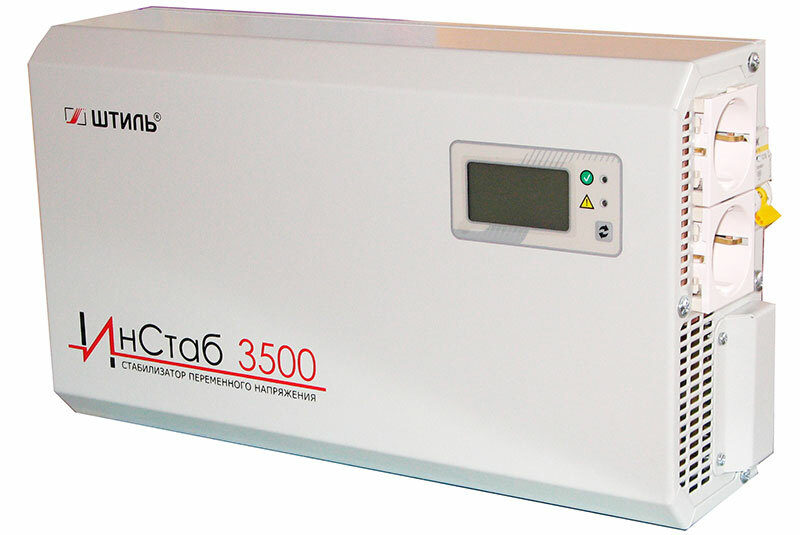
This is an innovative device with optimal characteristics that are not available to all other stabilizers. The converter can be used for protection of any household electric equipment: automation boiler house, pumps, household office equipment. The equipment delivers the voltage with high accuracy, without delays in time.
Advantages:
- Compact, thanks to the lack of a transformer in the device;
- Suppresses impulse noise completely;
- Excellent output characteristics when the input voltage fluctuates from 115 to 300 V. The deviation from the nominal value of 220 V is not more than 1%, and the frequency is not more than 0.5%.
Disadvantages:
- High price;
- Electronic components require cooling during operation. To this end, compact fans are used, the operation of which is accompanied by a low noise level.
Combined stabilizer
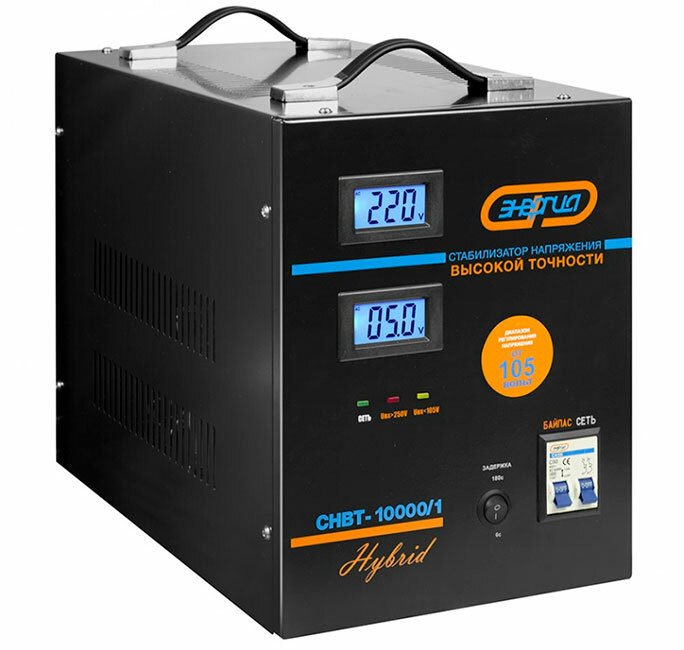
Can be used for any home electrical appliance. The device combines electromechanical and relay part of the converter. Adjustment of the current voltage value is carried out by smooth or step-by-step control, depending on the input parameters. If there is a strong voltage drop or its jump, the relay part is switched on, because the speed is necessary. When voltage is closer to the normative, the servo motor comes into operation.
Advantages:
- Accuracy of stabilization( 2-3%);
- Ability to work with significant loads;
- Smooth adjustment;
- High speed response.
Disadvantages:
- The need for brush replacement, mechanical wear of the relay;
- High price.
Basic parameters for the selection of the voltage regulator
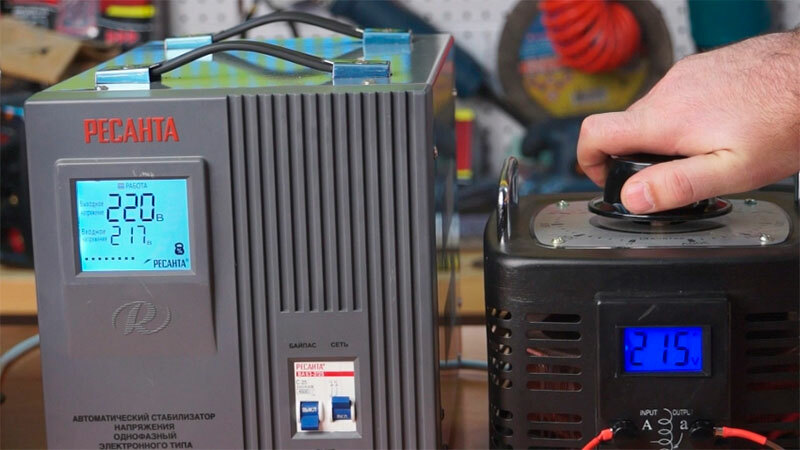
Many types of stabilizers are suitable for household use. Determine which device to choose for servicing the electricity consumers used at home or at the dacha, you need to take into account the main characteristics of the converter.
Fatness
Conventional stabilizers, designed for household electrical appliances, are rated at 220 V. For power supply of a country house, a three-phase network can be used, and some cottage electrical installations can also be three-phase( pumps, boiler equipment).It is important to take into account the phasing of the devices that will be energized to the stabilizer.
Power
The starting power of all devices that will serve the stabilizer is calculated. It can exceed the total capacity by 3-5 times. Information on the power of the appliance is indicated in its passport.
Stabilized voltage range
Each stabilizer can only be used to convert a specific voltage range. For household devices, this range from 130 to 270 B. If the voltage in the network is outside these limits, all electrical appliances will be turned off.
For accurate determination of the voltage range in the network, it is necessary to record the voltage for several days in a row during peak hours. On their basis, calculations are prepared and equipment is selected with satisfactory parameters.
Installation method
It can be wall-mounted or floor-standing. Selecting the installation location, you need to take into account the availability of free space in the equipment location area. It is necessary for the efficient operation of the fans that cool the appliance.
Which voltage regulator to choose
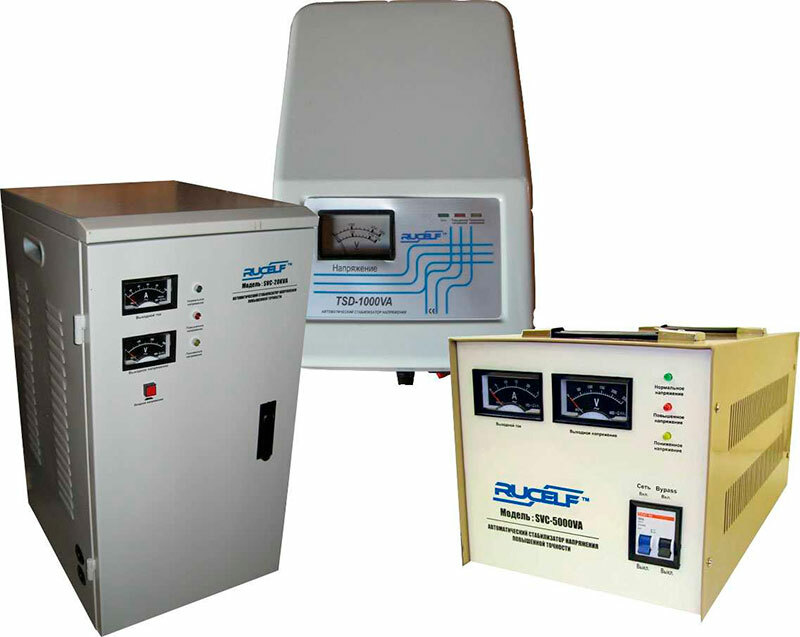
Depending on the tasks to be performed by the device, stabilizers are recommended:
1. Relay or inverter with a power of 0.5 kVA - to protect against power surges of a TV or medium power computer.
2. Electromechanical( power is calculated by connected consumers) - with insignificant voltage drops in the dacha where there is no valuable equipment.
3. Combined with a power of 10 kVA - for powering electrical appliance in an apartment or a well-equipped villa.
4. Electromechanical with a capacity of more than 15 kVA, three-phase - for a country cottage with a network of 380 B.
5. Thyristor or relay with a power of up to 1 kVA - for a gas heating boiler.
It is important to consider that for heating boilers do not use electromechanical stabilizers. Since the brushes, when in contact with the transformer, spark, which can provoke fire and fire.
Cost of voltage regulators
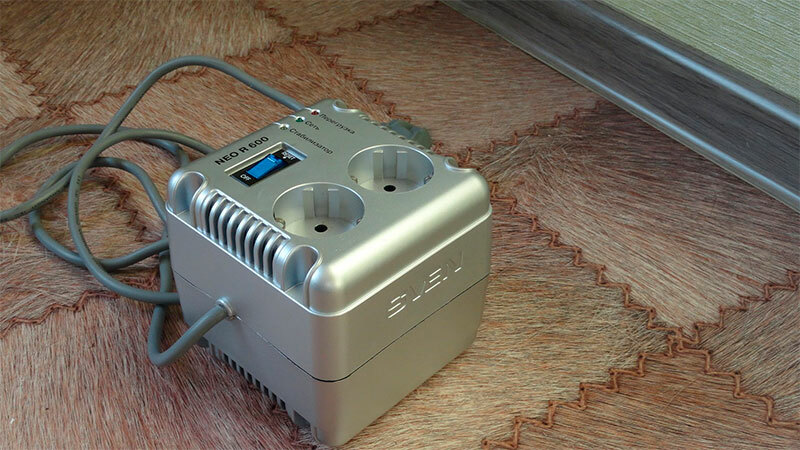
The cost of a voltage generator depends on the brand, the country of the manufacturer, technical characteristics.
Prices for single-phase stabilizers from 0.5 to 15 kVA:
1. Electromechanical - from 2 to 52 thousand rubles.
2. Relay - from 1.6 to 54 thousand rubles.
3. Inverter - from 6.5 to 150 thousand rubles.
4. Thyristor - from 1.6 to 65 thousand rubles.
5. Combined - from 2,6 to 71 thousand rubles.

